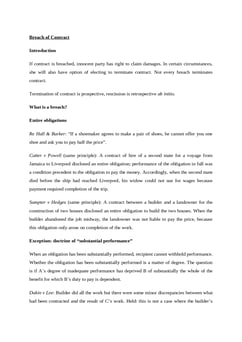Partridge v Crittenden [1968] 1 WLR 1204
Judgement for the case Partridge v Crittenden
Table Of Contents
KEY POINTS
When it comes to advertising and circulars, unless it is evident from the language used that they are meant as an offer, they can only be interpreted as an invitation to treat rather than an offer for sale.
FACTS
The appellant posted an advertisement in ‘Cage and Aviary Birds that said “ Quality British A.B.C.R. Bramblefinch cocks, Bramblefinch hens 25s each.” The words offer for sale had not been expressly mentioned anywhere in the advert.
On seeing the advert, Thomas Shaw Thompson wrote to the appellant asking him for a Bramblefinch hen, enclosing a cheque for 30s. The Appellant soon send the hen in a box, wearing a closed ring around its leg.
On behalf of the RSPCA, the Appellant was charged for illegally offering for sale a live wild bird that was not a closed-ring specimen. The appellant, on the other hand, maintained that the advertisement was not an offer to sell, but rather an invitation to treat.
The Court had to decide whether the appellant's advertisement was a genuine offer for sale or merely an invitation to treat.
COMMENTARY
The appellant’s advertisement was deemed to be an invitation to treat and not an offer to sell, therefore, the offense with which the appellant was charged was dismissed.
The court, used the example of Fisher v Bell [1961] 1 QB 394 to draw a distinction between an offer to sell and an invitation to treat.
ORIGINAL ANALYSIS
Defendant advertised the sale of wild birds which when “offering for sale” such animals was contrary to the Protection of Birds Act.
QBD acquitted him on the grounds that advertising was merely an “invitation to treat” and not an offer to sell.
Lord Parker CJ
Unless the advertisement is from a manufacturer, it makes business sense to treat advertisements as invitations to treat, not offers.
-
He says that if an advertisement is an offer then traders may be forced to supply an infinite quantity of the substance regardless of whether they have the necessary stock e.g. a menu in a restaurant would make the owner contractually liable if a customer ordered more food than the restaurant had.
CW: no, the courts would simply need to interpret the offer as being one “subject to availability
For Further Study on Partridge v Crittenden
Need instant answers? Our AI exam tutor is here to help.
Ask questions 🙋 Get answers 📔 It's simple 👁️👄👁️
Our AI is educated by the highest scoring students across all subjects and schools. Join hundreds of your peers today.
Get StartedSimilar Cases
Related Product Samples
These product samples contain the same concepts we cover in this case.
| Contract Law | Contract Law Problem Question Summary Notes (157 pages) |
| Contract Law | Offer And Acceptance Notes (15 pages) |

 Since 2010, Oxbridge Notes has been a trusted education marketplace, supplying high-quality materials from top achievers at universities like Oxford, Cambridge, LSE, Harvard, and Yale.
Since 2010, Oxbridge Notes has been a trusted education marketplace, supplying high-quality materials from top achievers at universities like Oxford, Cambridge, LSE, Harvard, and Yale.